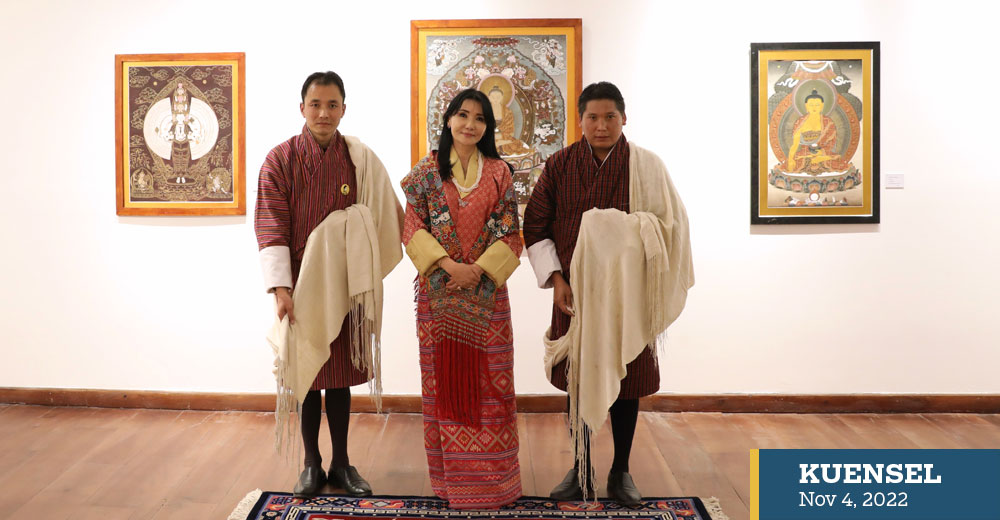Jigmi Wangdi
Her Majesty the Gyalyum Sangay Choden Wangchuck inaugurated “Pigments: Colours of the Earth,” an exhibition of traditional art, at the Royal Textile Academy (RTA) yesterday.
The exhibition by Rinzin Dorji and Penjor Dorji includes a piece that is 100 percent made in Bhutan, using nettle canvas and mineral paint.
The event was organised to showcase works of art with the use of natural pigments – organic and mineral-based.
The Executive Director of RTA, Rinzin Ongmo Dorji said that although RTA’s main mandate is to promote the traditional art form of weaving, the organisation also works towards promoting the other traditional crafts in the country.
“Art forms like this are not very widely done using naturally-organic minerals and pigments. The artists have also gone to the extent of making their own canvas organically in Bhutan,” she said. “This is an art that has to be revived.” She said that it was because of this reason that RTA is promoting such arts.
Rinzin Dorji is the Founder of Mineral Pigment Painting and Penjor Dorji is the founder of Green Pigment Production.
Rinzin Dorji said that this form of painting materials could be used in contemporary, modern and western forms of art, depending on the artist’s skill. “Our aim with this type of painting is to revive the traditional art form that was used in the past,” he said.
Rinzin Dorji added that the reason for using local organic materials to make the canvas and colours is to ensure that the products are sourced from within Bhutan.
“The reason we want local materials is that we believe it will help a lot of other people such as the raw material collectors, those who weave the nettle canvases, and also local farmer groups,” he said.
Rinzin Dorji said that these forms of canvases and colours were used in the past for paintings and thangkas. However, owing to the long and tedious process of producing the materials, people today opt to use imported alternatives.
“This is a form of art that should not be forgotten and that is why we are finding ways to conserve it,” he added, “We only hope that we can increase people’s interest in using such locally produced materials.”
Penjor Dorji said, “We use nettle canvases because the minerals and pigments that we are using do not stay for long on the modern canvases we get today. There is a big difference in the quality of the canvases mainly because the one we use is organic.”
He added that though there are challenges in this form of painting, they will work to promote the art to conserve for the future.
“We would like to thank Her Majesty the Gyalyum Sangay Choden Wangchuck and the RTA for giving us this opportunity. This endeavour would not have been possible without their continuous support,” said Rinzin Dorji.
The exhibition will be open to the public from November 4 to February 3 2023 at the RTA gallery.


